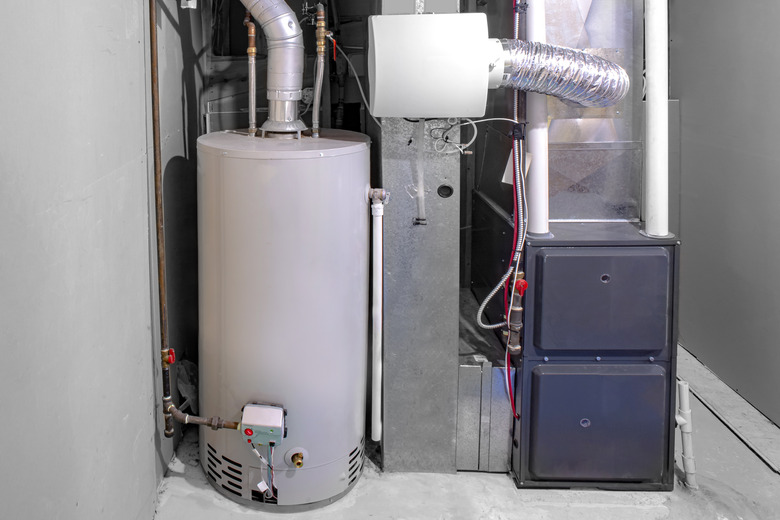What Causes Excess Soot Buildup In A Propane Furnace?
Most of the byproducts of propane combustion are carbon compounds. Since soot is primarily carbon, a certain amount inside your furnace is normal. Ideally, there shouldn't be any soot, because complete combustion produces only gaseous byproducts. But hardly anything in the real world is ideal, and a small amount of soot is unnoticeable because it stays inside the furnace's heat exchanger.
There's a problem when buildup inside the heat exchanger becomes excessive, however. If you notice soot on the outside of the furnace, that's a red flag warning you to call a heating, ventilation and air conditioning technician as soon as possible.
Tip
Soot is a byproduct of incomplete propane combustion, and it builds up in a furnace when the furnace isn't cleaned regularly.
Burner Soot Creates More Soot
Burner Soot Creates More Soot
When a fire burns in the fireplace, invisible hot gases surround it when it's burning bright. When it cools down, the gases become thick and dense and turn to smoke, and the smoke turns into soot when it contacts the walls of the fireplace.
The same thing happens inside the combustion chamber of a furnace. When the burners are clean and burning hot, they produce microscopic amounts of smoke and soot. Eventually, there's enough buildup to cause the burners to burn cooler and produce even more of these carbon deposits. This is one reason why it's important to clean the burners periodically.
The soot also collects on the sides of the heat exchanger, which is the chamber that separates the burners from the air circulating inside the plenum. It has an insulating effect, inhibiting the transfer of heat. If you notice a gradual increase in your propane bill, that could be the reason, because the furnace has to stay on longer to reach its target temperature.
Visible Soot Around Furnace: Beware!
Visible Soot Around Furnace: Beware!
No matter how much soot there is inside the heat exchanger, that's where it should stay. If you notice soot on any of the components inside the furnace, on the floor or walls of the furnace room or around any of the vent openings in your house, it means the heat exchanger is leaking. If so, soot — messy as it is — is the least of your problems, because the furnace is also leaking combustion gases, including carbon monoxide possibly into your home. Carbon monoxide is odorless and deadly, and if you don't have carbon monoxide detectors to warn you of its presence, you're in real danger.
A heat exchanger usually leaks because it's cracked, and you can't fix it — you can only replace it. That's a job for the HVAC technician, whom you need to call as soon as you notice the problem. You should shut down the furnace and leave it off until the technician arrives.
Worst Case Scenario: Puff Back
Worst Case Scenario: Puff Back
If you don't clean your burners regularly and they get clogged with soot, one of them could actually explode, sending soot throughout the ductwork and setting you up for an expensive cleaning job.
This type of explosion is known as a puff back, and it doesn't necessarily damage the heat exchanger, although it could. More probably, soot escapes from the bottom of the heat exchanger where the burners are located and circulates through the plenum and into the ducts. The potential for this type of event is another reason to clean the burners regularly as part of the routine furnace tune-up you should schedule yearly.
